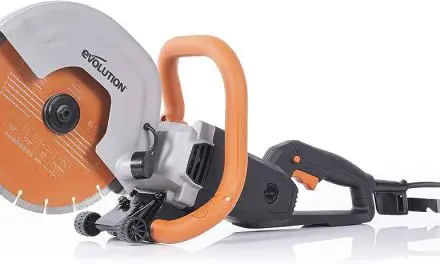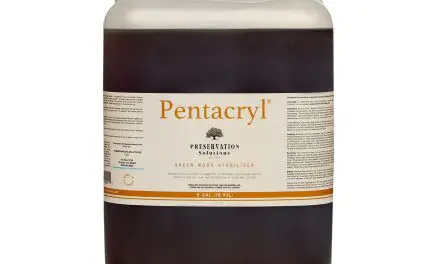There is anxiety that comes with the use of a power saw, especially when using it for the first time. Timidity occurs when one hasn’t mastered its use. However, that would no longer be an issue once you ask yourself ‘how tight should a bandsaw blade be’ before using it? It’s a leeway of making the best use of the unit and cutting with precision.
Nonetheless, bandsaws are often used for woodworking, metalworking, and lumbering. Indeed, that’s why you can use different blades on it for smooth cutting.
The like blades are carbon-steel, bimetal, spring steel, and so on. Although they are all blades, their capabilities vary. Indeed, that’s why the limit of tensions applied while tightening them ought to vary too so that one can scoop the best result. Of course, you wouldn’t want to compare the tension required to keep carbon-steel functional to what’s expected to keep bi-metal at its optimal; they are different. However, there are some prerequisites that the manufacturer stated. Let’s check them out in the subsequent study of this subject.
3 Things to Consider about How Tight Should a Bandsaw Blade Be:
Measures to Consider:
The thickness and width of the blade are worth considering when tightening it. Nonetheless, manufacturers directed that the tension on cutting blades should always fall between 15,000 psi and 20,000 psi.
However, it all depends on the thickness of the blade itself and the type that one is using. This is valid on blades such as carbon steel or some blades designated for executing woodworking projects.
In situations whereby you’re using a thicker blade or some other like bimetal and carbide, you’d need to intensify the tension between 25,000 psi and 30,000 psi. It’s paramount that one puts that into the heart when one is doing the exercise. One can use a clamp meter to read the measurement.
Practical Methods:
- It will help if you do the exercise absolutely well to attain high beam strength.
- Clamp the tension scale on it to read the measurement. Nonetheless, you’d have to flap the tip of your finger at the edge and see how flexible and rigid it has become.
- You can even use your hand to make a “feel” of it. See whether it would shift out of its position or not.
- If possible, you can switch on the machine and see how far you’ve tensioned it, then make some corrections.
- In case there is no tension scale, you can intuitively set it. All you have to do is that the blade’s teeth are not halted in the kerf /stock of the workpiece.
Safety Measures:
- The blade shouldn’t be stiff; at least, it should be flexible.
- Also, understanding the range you can set the tension is one thing, and understanding the best level to do that is another thing. In other words, it’s expedient you keep adjusting the firmness of the blade as the thickness of the workpiece and tensile strength of the edge varies.
- Notwithstanding, you’d always need to be in full control of the whole activity.
- Don’t forget to use the right blade for the right task.
Now that you’ve known the extent of tightness a bandsaw should be, what’s impeding you from getting down to work? Use these details and make the right choice. Of course, you’ll never have difficulties using this at all.
How do I know if a bandsaw blade is too tight or loose?
To determine if a bandsaw blade is too tight or loose, you will need to check the tension on the blade. The tension should be set so that the blade does not move when pushed with light pressure. If it moves, the tension may be too loose. Conversely, if the blade appears very difficult to push, it may be too tight. To adjust the tension on a bandsaw blade, use an Allen wrench and turn either clockwise or counterclockwise depending on whether you want to increase or decrease the tension. You can also consult your manual for specific instructions on how to properly adjust tension levels for your particular model of saw. It’s important to always follow safety protocols when adjusting a saw and make sure that any adjustments are done in accordance with the manufacturer’s instructions.
Additionally, you can also check for signs of excessive wear or instability on your blade such as cracked teeth, loose welds, and bent edges. All of these are indicators that your saw needs to be serviced. Proper tensioning and regular maintenance will ensure that your saw is working at its best and will help to reduce the risk of injury from using a faulty blade.
How often should I check and adjust the tension of my blades to ensure safe operation?
It is important to check and adjust the tension of your blades regularly in order to ensure safe operation. Generally, you should check the tension after every 10 hours of use and adjust as needed. If you notice any unusual vibration or noise during sawing, it’s best to stop immediately, inspect the blade for proper tension, then re-adjust if necessary before resuming work.
Additionally, you should always consult with your manufacturer’s instructions for recommended maintenance guidelines specific to your saw model. Taking regular preventative steps can help keep both you and your machine safe!
A bandsaw blade should be tensioned tight enough to provide stability and control during cutting, but not too tight as to cause excessive friction. It’s best to start with a lower tension setting, as this will allow for adjustment until the right balance is achieved. Pay attention to the sound of the blade when running– if it has a high-pitched whine or squeal, it could mean that the blade is too tight and needs to be adjusted. Keeping your bandsaw blade properly tensioned will lead to better results and improved longevity of your saw blades. With proper maintenance and care, you can ensure that your bandsaw runs efficiently and safely for years to come.


















